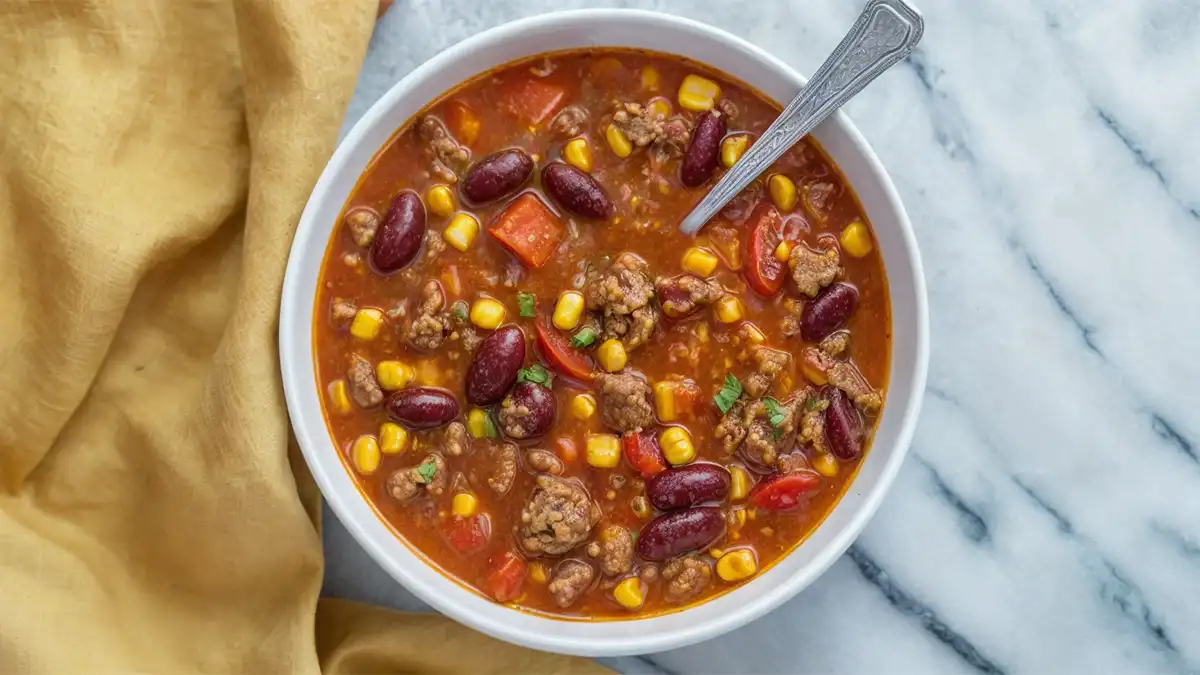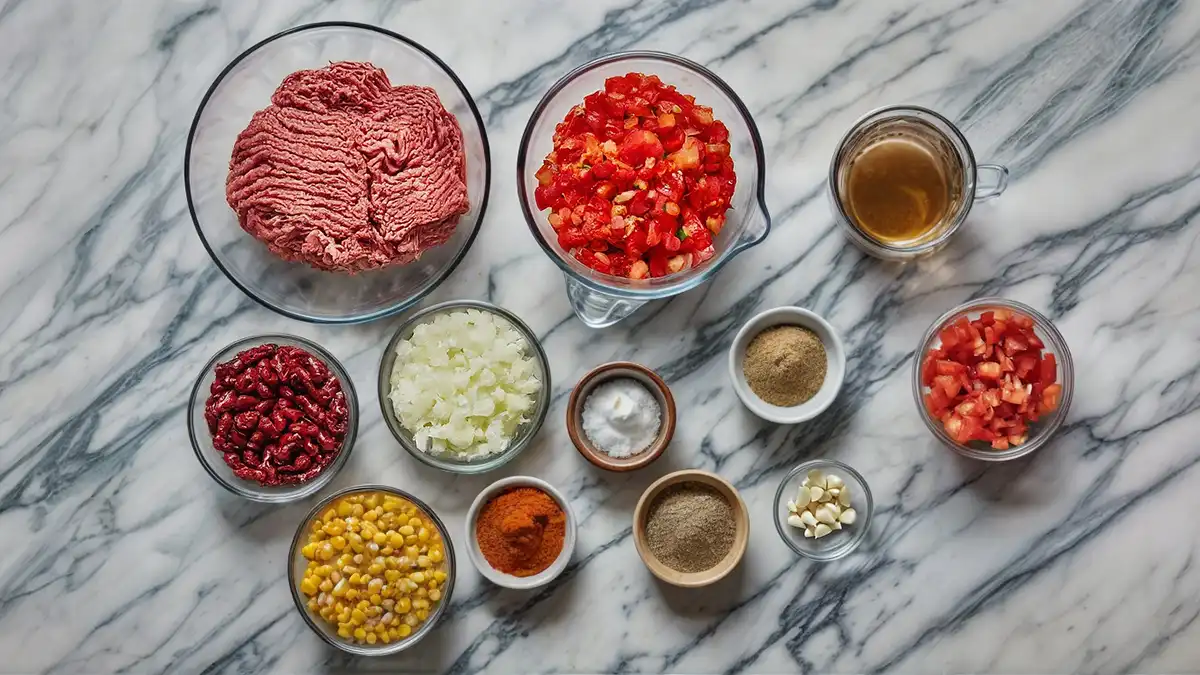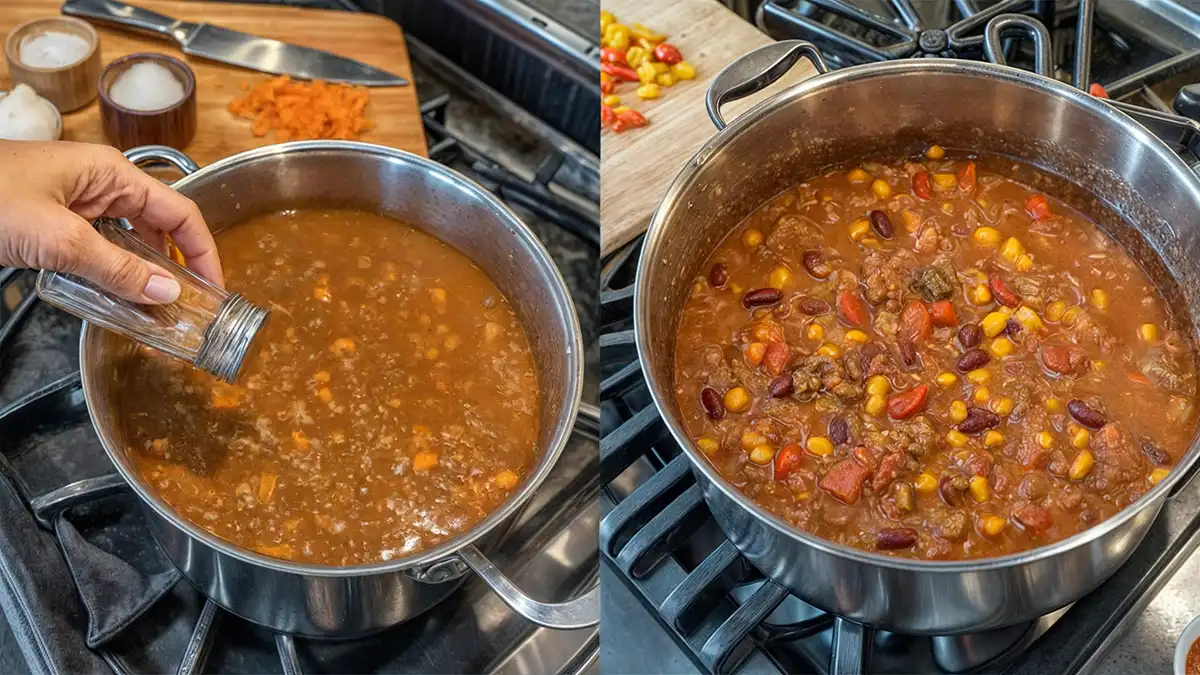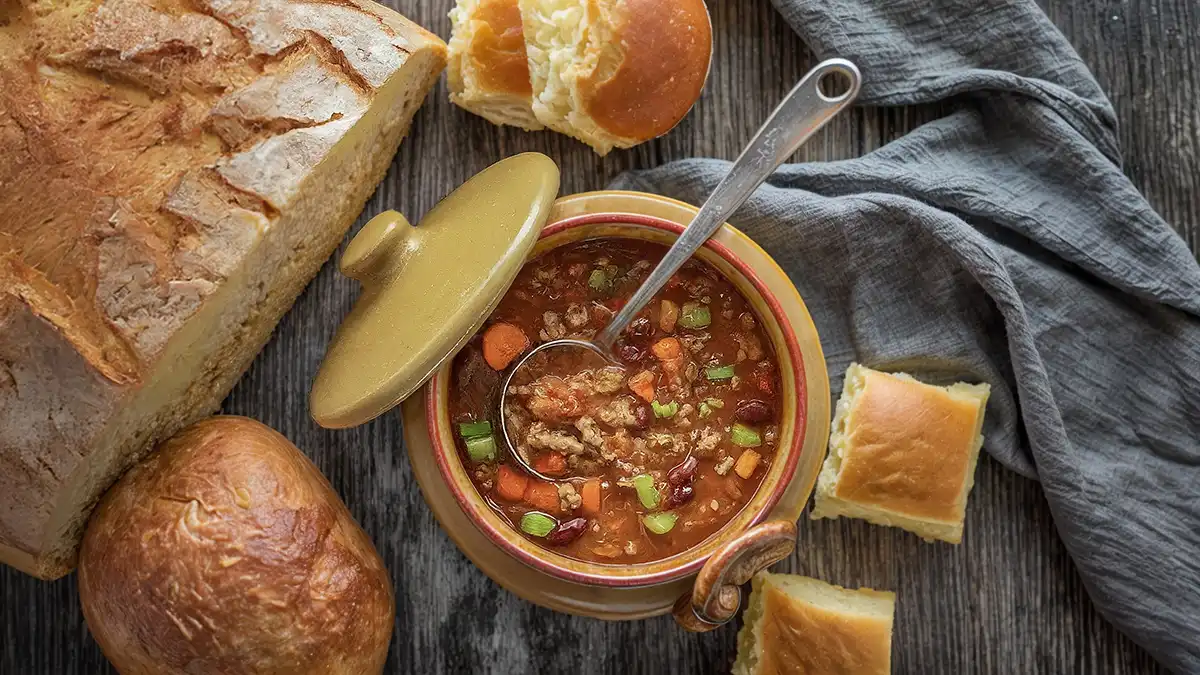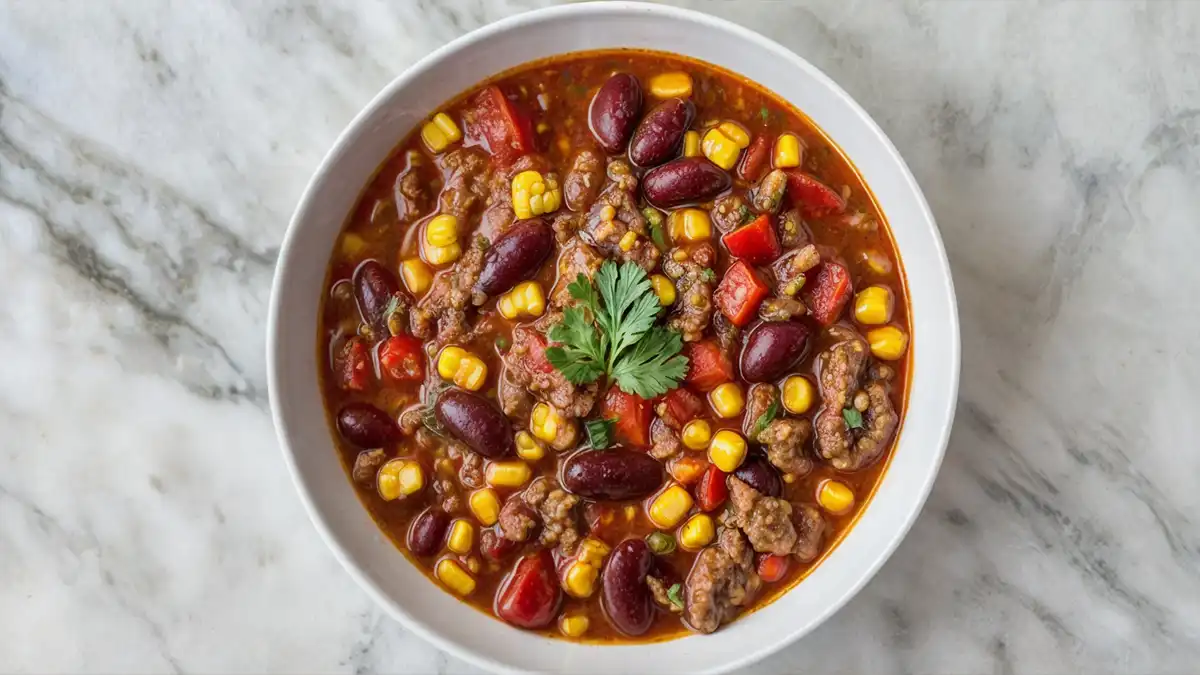Dive into the hearty world of cowboy soup recipe, a traditional comfort food that embodies the robust spirit of the Old West. As much a part of American culinary heritage as apple pie, this soup combines rich flavors with simple, wholesome ingredients, making it a beloved dish across the nation.
Table of Contents
| Section | Content |
|---|---|
| Introduction | Overview of cowboy soup, including its definition, historical background, and regional popularity. |
| Detailed Ingredients List | Comprehensive breakdown of the ingredients needed for cowboy soup, including substitutes for dietary restrictions. |
| Step-by-Step Cooking Instructions | Detailed cooking instructions from preparation to simmering, ensuring optimal flavor development. |
| Customization Options | Exploration of different ways to personalize cowboy soup to cater to various tastes and regional influences. |
| Accompaniments | Suggestions for side dishes and beverages that complement the rich flavors of cowboy soup. |
| Nutritional Benefits | Discussion on the health benefits of the key ingredients in cowboy soup and how it fits into a balanced diet. |
| FAQs | Answers to common questions about cowboy soup, enhancing understanding of its preparation and variations. |
| Conclusion | A summary of the key points discussed, with an invitation to try and customize the recipe. |
What is Cowboy Soup?
Cowboy soup, often regarded as a staple among rustic meals, is a thick, flavorful stew packed with meat, vegetables, and beans. It’s designed to satisfy hunger thoroughly and provide essential nutrients, making it an ideal meal for those long days on the ranch or a cozy dinner at home.
Brief History and Cultural Significance
Initially, cowboy soup was a practical solution to meal preparation in the wild West, where cowboys needed high-energy, nutritious food that could be cooked over a campfire. The recipe has evolved, but its essence remains a testament to resourcefulness and culinary creativity.
Overview of Its Popularity in Different Regions
While cowboy soup originated in the plains and deserts of the American West, it has since found its way into kitchens across the country. Each region adds its local flair to the recipe, whether it’s spicy chilies in the Southwest or fresh seafood in the coastal areas.
Table: Ingredients and Nutritional Information
| Ingredients | Quantity | Calories per Serving | Proteins (g) | Fats (g) |
|---|---|---|---|---|
| Ground beef | 1 lb | 250 | 26 | 15 |
| Onion | 1 medium | 44 | 1.2 | 0.1 |
| Garlic | 2 cloves | 8 | 0.4 | 0.1 |
| Diced tomatoes | 1 can (14 oz) | 80 | 2 | 0.5 |
| Corn kernels | 1 cup | 132 | 3.4 | 1.8 |
| Kidney beans | 1 can (14 oz) | 210 | 13 | 0.8 |
| Bell pepper | 1 large | 30 | 1 | 0.3 |
| Beef broth | 4 cups | 80 | 6 | 2 |
| Spices (chili powder, cumin, salt, pepper) | To taste | Minimal | – | – |
As this delightful soup travels through time and space, it remains a beloved classic, adaptable to modern tastes and preferences while still staying true to its roots. Enjoy the robust flavors of this all-American dish that brings warmth and satisfaction to any meal.
Detailed Ingredients List for Cowboy Soup Recipe
Gather your ingredients and prepare to create a delicious, warming bowl of cowboy soup that brings together a symphony of flavors. This section will guide you through each component required for making this rustic and satisfying dish.
Essential Components and Their Roles
Meats: Ground Beef or Alternative Proteins
Typically, cowboy soup is hearty and meaty, with ground beef as a central ingredient providing richness and protein. For a leaner option, ground turkey or chicken can be substituted. Vegetarians might prefer plant-based ground substitutes, ensuring the soup remains hearty yet meat-free.
Vegetables: A Colorful Array
Essential to any cowboy soup are the vegetables that add not only texture and flavor but also nutritional value. Common choices include onions, garlic, bell peppers, and corn. Each vegetable brings vitamins and minerals, enhancing the healthfulness of the dish.
Beans: Kidney or Pinto
Beans are a staple in cowboy soup, offering fiber and protein. Whether you choose kidney beans for their firmness or the softer pinto beans, they contribute a satisfying, creamy texture.
Liquid Base: Beef Broth
The broth serves as the foundation of the soup, enveloping all the ingredients in warmth. Beef broth is typically used for its depth of flavor, but chicken or vegetable broth are excellent alternatives for lighter or vegetarian versions.
Seasonings: Spices and Herbs
Chili powder, cumin, salt, and black pepper are crucial for achieving the signature robust taste of cowboy soup. Adjust these seasonings to suit your taste preferences and add others like smoked paprika or dried herbs for additional layers of flavor.
Substitutes for Specific Dietary Needs
Catering to all dietary preferences ensures that everyone can enjoy this traditional dish. Here are a few substitute options for common dietary restrictions:
- Gluten-Free: Verify that all packaged ingredients such as broth or canned goods are labeled gluten-free.
- Vegan Options: Use plant-based meat substitutes and vegetable broth. Consider nutritional yeast for a cheesy flavor.
- Low-Sodium: Opt for low-sodium broth and beans, and adjust the added salt accordingly.
Linking Cowboy Soup with Other Comfort Foods
For those who enjoy exploring different comforting recipes, consider pairing cowboy soup with a hearty side like the delicious Porcupine Meatballs with Mushroom Soup. This combination not only doubles the comfort but also introduces varied textures and flavors to your meal.
As you assemble these ingredients, remember that the beauty of cowboy soup lies in its flexibility and the personal touch you bring to the pot. Whether sticking to tradition or adapting to personal or dietary needs, each bowl of cowboy soup promises a delicious, comforting experience.
Step-by-Step Cooking Instructions for Cowboy Soup Recipe
Preparing cowboy soup involves a sequence of straightforward steps designed to layer flavors and textures effectively. Follow this guide to ensure each spoonful is bursting with taste.
Preparation Steps
Gathering and Prepping Ingredients
Firstly, organize all your ingredients. Chop the onions, garlic, and bell peppers. Drain and rinse the beans if you are using canned ones. This preliminary preparation makes the cooking process smoother and quicker.
Cooking the Meat
Begin by browning the ground beef in a large pot over medium heat. If you’re using a plant-based alternative, cook it until it’s heated through and slightly browned. This step is crucial for adding depth to the soup’s flavor profile.
Adding Vegetables
Once the meat is cooked, add the chopped onions and garlic to the pot. Cook them until they’re soft and translucent, which usually takes about five minutes. Following this, add the bell peppers and corn, cooking for another few minutes to bring out their flavors.
Simmering the Soup
Incorporating Liquids and Seasonings
Pour in the beef broth, then add the canned tomatoes with their juice. Stir in all the spices, including chili powder, cumin, salt, and pepper. This combination will form the rich and spicy base of your cowboy soup.
Letting the Soup Cook
Bring the mixture to a boil, then reduce the heat to a simmer. Let the soup cook uncovered for at least 20 to 30 minutes. During this time, the flavors will meld together, and the soup will start to thicken slightly.
Final Adjustments
Taste your soup and adjust the seasoning if necessary. If you like your soup with more heat, a pinch more chili powder or some hot sauce can make all the difference. Once the soup is seasoned to your liking, it’s ready to serve.
Serving Suggestions
Serve your cowboy soup piping hot. For an extra touch of richness, sprinkle some shredded cheese on top and add a dollop of sour cream. A side of crusty bread or cornbread makes an excellent companion to this hearty meal. For a unique cornbread recipe that complements the rustic flavors of cowboy soup, check out the Cracker Barrel Pancake Recipe which can be adapted into delightful cornbread.
Tutorial Video
Finally, for visual learners, here’s a helpful tutorial video that walks you through making a similar rustic soup. This video can provide additional tips and variations:
By following these steps, you’ll create a delicious, comforting bowl of cowboy soup that’s perfect for any meal. Whether you’re feeding a crowd or just looking for a warming dinner option, this soup is sure to satisfy.
Customization Options for Cowboy Soup
Cowboy soup is not only a dish that warms the heart but also a versatile recipe that invites various adaptations. This section explores how you can tweak the traditional recipe to suit different tastes and occasions.
Variations of Cowboy Soup Across Different States
Regional Twists
In Texas, for instance, you might find cowboy soup with a generous addition of jalapeños or green chilies, giving it a distinct kick. Meanwhile, in the Midwest, versions often include sweet corn or even squash for a heartier texture. Each state or region can introduce local ingredients that transform the basic cowboy soup into something uniquely their own.
Seasonal Variations
Depending on the season, ingredients in cowboy soup can be varied to make use of what’s fresh and available. In summer, fresh tomatoes and bell peppers from the garden can replace canned goods, adding brightness and a burst of flavor. During the winter months, root vegetables like carrots and parsnips make excellent additions for their earthy flavors and added heartiness.
How to Personalize the Soup to Your Taste
Protein Choices
While ground beef is the classic choice, swapping it for ground turkey, chicken, or even diced steak can tailor the soup to personal dietary preferences or just to mix things up. Plant-based alternatives like lentils or quinoa are great for those looking for a vegetarian option.
Spice Levels
Adjust the heat level by playing with the amount and type of chili powders and peppers. Smoked paprika or chipotle powder can add a deep, smoky flavor, while cayenne pepper can increase the heat for those who enjoy a spicier dish.
Creative Add-Ins
For a richer texture and flavor, consider adding ingredients like bacon, smoked sausage, or even a splash of beer. These components can deepen the flavors, making the soup even more satisfying.
Herbs for Freshness
Fresh herbs like cilantro, parsley, or thyme added right before serving can brighten up the flavors. These herbs bring a fresh pop of color and taste that enhances the overall dish.
Linking Cowboy Soup with Other Rustic Dishes
If you’re planning a larger meal or want ideas for other rustic dishes that complement cowboy soup, consider exploring the Jamaican Beef Patty Recipe. These flavorful patties can serve as a wonderful side or main dish, offering a delightful contrast with their spicy meat filling and flaky pastry.
By integrating these customization options, you transform the traditional cowboy soup into a personalized meal that caters to your preferences and the tastes of your family or guests. Whether sticking closely to the original recipe or venturing into new variations, cowboy soup remains a forgiving and flexible dish perfect for any occasion.
Accompaniments for Cowboy Soup
Enhancing your cowboy soup experience involves pairing it with the right side dishes and drinks. This part of the guide suggests the best accompaniments that complement the rich flavors of the soup, turning a simple meal into a feast.
Ideal Side Dishes to Serve with Cowboy Soup Recipe
Breads and Rolls
A hearty soup pairs beautifully with warm, freshly baked bread or rolls. The soft, absorbent nature of bread makes it perfect for soaking up the delicious broth, ensuring not a drop goes to waste. For an easy homemade option, try the Cracker Barrel Pancake Recipe, adapted to make savory cornbread, which offers a delightful sweetness that contrasts nicely with the savory soup.
Salads
To balance the heartiness of cowboy soup, a crisp, fresh salad can add a refreshing element to your meal. A simple green salad dressed with a light vinaigrette complements the soup without overpowering its flavors.
Beverages That Pair Well with the Soup
Wine Pairings
If you enjoy wine with your meals, consider a bold red wine such as a Zinfandel or a Shiraz. These wines have robust flavors that can stand up to the richness of the soup without being overshadowed.
Beer Pairings
For beer enthusiasts, a dark or amber ale works wonderfully with cowboy soup. The maltiness of these beers echoes the soup’s depth of flavor, enhancing both the drink and the dish.
Non-Alcoholic Options
A rich, tomato-based soup like cowboy soup also goes well with iced tea or a hearty lemonade. These drinks provide a refreshing break from the soup’s intensity, cleansing the palate between bites.
Linking Cowboy Soup with Other Comfort Foods
For those interested in exploring other comforting dishes that could accompany or follow cowboy soup, the Cinnamon Applesauce is an excellent choice. Its sweet, spiced flavor makes it a perfect dessert or side, particularly in cooler weather.
By choosing the right sides and drinks, you can create a well-rounded meal that showcases cowboy soup at its best. These accompaniments not only enhance the dining experience but also allow for a variety of flavors and textures that keep the meal interesting and satisfying.
Nutritional Benefits of Cowboy Soup Recipe
Cowboy soup is more than just a satisfying meal; it’s packed with nutrients that make it a healthy choice for any diet. This section will delve into the health benefits of the key ingredients used in cowboy soup and discuss how this dish can fit into a balanced diet.
Health Benefits of Key Ingredients
Rich in Proteins and Iron from Meats
Ground beef, a common base for cowboy soup, is an excellent source of protein and iron, which are essential for muscle repair and oxygen transport in the blood, respectively. For those looking for alternatives, turkey or chicken also provide high-quality protein with less fat.
Vitamins and Minerals from Vegetables
Vegetables like onions, bell peppers, and tomatoes not only add flavor and color to the soup but also contribute a variety of vitamins and minerals. For instance, bell peppers are high in vitamin C, while tomatoes provide vitamin K and potassium.
Fiber from Beans
Beans are not only a great source of plant-based protein but also rich in fiber, which helps in digestion and maintaining healthy blood sugar levels. Whether you choose kidney beans or pinto beans, they add a hearty texture and nutritional benefits to the soup.
Incorporating Cowboy Soup into a Balanced Diet
Caloric Content and Serving Size
While cowboy soup is hearty and filling, it’s also relatively low in calories, making it a suitable option for those managing their weight. The key is to consider the serving size and balance it with other food groups.
Dietary Adaptations
For those on specific diets, cowboy soup can be easily adapted. Use lean meats or plant-based proteins for a lower-fat version, or incorporate low-sodium broths and fresh vegetables to reduce salt intake.
Nutritional Information on Common Soup Ingredients
For detailed nutritional information about the ingredients typically used in cowboy soup recipe, refer to the USDA National Nutrient Database. This resource provides comprehensive data on calories, vitamins, minerals, and more.
Linking Cowboy Soup with Other Nutritious Recipes
If you’re looking for another nutritious dish to complement your cowboy soup, consider trying the Elderberry Bombs Recipe. These small treats are packed with antioxidants and are a perfect sweet bite without the guilt.
By understanding the nutritional content of cowboy soup and how it fits into a balanced diet, you can enjoy this comforting meal while still maintaining healthy eating habits. This dish not only satisfies your taste buds but also supports your nutritional needs.
FAQs About Cowboy Soup Recipe
What is cowboy soup made of?
Cowboy soup is a hearty dish that typically includes a robust mix of ground beef, a variety of vegetables like onions, bell peppers, and corn, along with kidney beans or pinto beans. It’s simmered in a rich broth seasoned with spices like chili powder and cumin, making it a filling and flavorful meal.
What is the difference between country living stew and soup?
The main difference between a stew and a soup like cowboy soup lies in the consistency and cooking technique. Stews are generally thicker, with less liquid and more emphasis on the solid ingredients, which are often simmered slowly to intensify the flavors. Soups, on the other hand, usually have a more generous amount of broth, making them lighter and often quicker to prepare.
What makes a bowl of soup more flavorful?
Enhancing the flavor of a soup can be achieved by sautéing the base ingredients like onions and garlic until they’re golden, adding layers of spices and herbs, and allowing sufficient cooking time for the flavors to meld. Additionally, using a rich stock as the foundation and adjusting seasonings before serving can greatly boost the taste.
How many calories are in cowboy soup?
The calorie content in cowboy soup can vary depending on the ingredients and portion sizes. On average, a serving of cowboy soup can contain between 250 to 400 calories, making it a satisfying yet not overly heavy meal option. For those monitoring their calorie intake, consider the types of meat and the amount of oil used during cooking.
Conclusion: Celebrating the Richness of Cowboy Soup Recipe
Recap of Key Points
In this detailed exploration of cowboy soup, we’ve journeyed through the origins and evolution of this beloved dish, unveiling its robust flavors and versatile nature. From the essential ingredients that make up its hearty base to the diverse ways it can be adapted and served, cowboy soup stands out as a quintessential comfort food.
Encouragement to Experience Cowboy Soup
Whether you’re a seasoned chef or a beginner in the kitchen, preparing cowboy soup offers a delightful culinary adventure. By following the steps outlined in this guide, you can create a warming, nutritious meal that not only feeds the body but also comforts the soul. Moreover, the flexibility of this recipe encourages personalization, allowing each cook to put their unique spin on the traditional dish.
Invitation to Customize and Share
I encourage you to try making cowboy soup yourself, experimenting with different ingredients and variations to suit your taste preferences. Additionally, sharing this flavorful soup with friends and family can turn any gathering into a memorable occasion, filled with good food and warm conversations.
Ultimately, cowboy soup is more than just a meal; it’s a celebration of rustic, simple ingredients coming together to create something truly satisfying. So, grab your pot and your spices, and let the rich flavors of cowboy soup bring a taste of the American West into your home.

